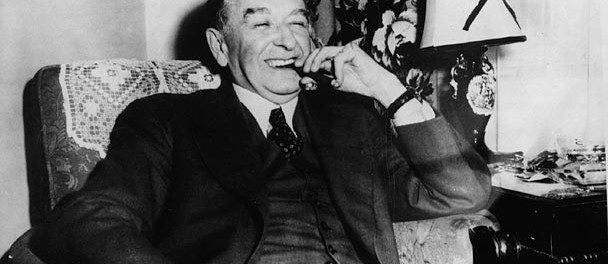1945-8: Duplessis’ Countryside Controversies & Other Quebec Curios
Part of "Shadows and Revolution", 1900-1960
Maurice Duplessis, back in power after a stunning election, was once again at the very top of the provincial politics pecking order. Many things had changed as he sat as the Opposition leader: women were allowed to vote, the Université de Montréal had seen its completion, and a new hydroelectric company, Hydro-Québec, was in town, though it was by no means a giant at the time. As Duplessis sat in the seat reserved for the Legislative Assembly’s Premier, he had new ideas on his mind, ideas that he could pass very easily with his majority.
One of his major accomplishments after his re-election dealt with electricity and the countryside. Months after the election, in May of 1945, the Duplessis government passed a law to give over twelve million dollars to create the Bureau of Rural Electrification, which would, in turn, create electricity cooperatives that would make electricity easily accessible to remote rural areas. Prior to Duplessis’ initiative, only 19% of farms had access to electricity. After Duplessis injected the funds needed for these people to have easier access to this new technology, this percentage snowballed to over 90% of farms being able to harness electricity. The countryside no longer lived with the cycle of day and night; electricity in the rural areas meant that streets and houses were able to benefit from a new, industrial technology. Despite the potential of hydroelectricity provided by Hydro-Québec, Duplessis opted to use the Rural Electrification Agency, a concurrent distributer of electricity.
Thought Duplessis had achieved a very important and progressive achievement in the countryside, he was not without his controversies. One of them continues to this very day. In an attempt to gain more federal funding for mental hospitals, Duplessis entrusted the Catholic Church to take care of orphans. These orphans, more likely than not children born of wedlock in a time where single mothers were sinners and abortions were illegal, were certified mentally ill by doctors despite not having any proof of said mental illness. These children, now incapable in the eyes of the law and with very few legal rights (illegitimate children, for instance, were incapable of inheriting in the eyes of the laws then in place), were placed in the care of the Church, where many were subjected to mental, physical, and sexual abuse. Education for these supposedly mentally-deficient children was seen as unnecessary and forced labour was a priority. The over twenty-thousand Duplessis Orphans, as they would later be named, were also subject to medical experiments. In the meanwhile, the Québec government raked in money due to the sheer number of “mentally-ill” in their care.
As the 1940s came to a close, Quebec would have another election, with old rivals Maurice Duplessis and Adélard Godbout vying for the seat of Premier. Godbout’s days as a contender, however, were long over, and Duplessis was elected for a third time as Premier, winning eighty-one seats to Godbout’s eight. Godbout would soon leave provincial politics after this defeat, appointed to the Senate by Canadian Prime Minister Louis St. Laurent. Godbout would be replaced by Georges-Émile Lapalme, who would be the final candidate against Duplessis to lose. In the shadows, the new generation of young intellectuals such as Jean Lesage and René Lévesque would loom in the shadows, Lesage already in politics on the federal level and Lévesque working as a reporter for Radio-Canada. These two men, of a younger generation, would cast an eye on the actions of Duplessis and vow to change what they saw as a society in dire need of modernisation.






